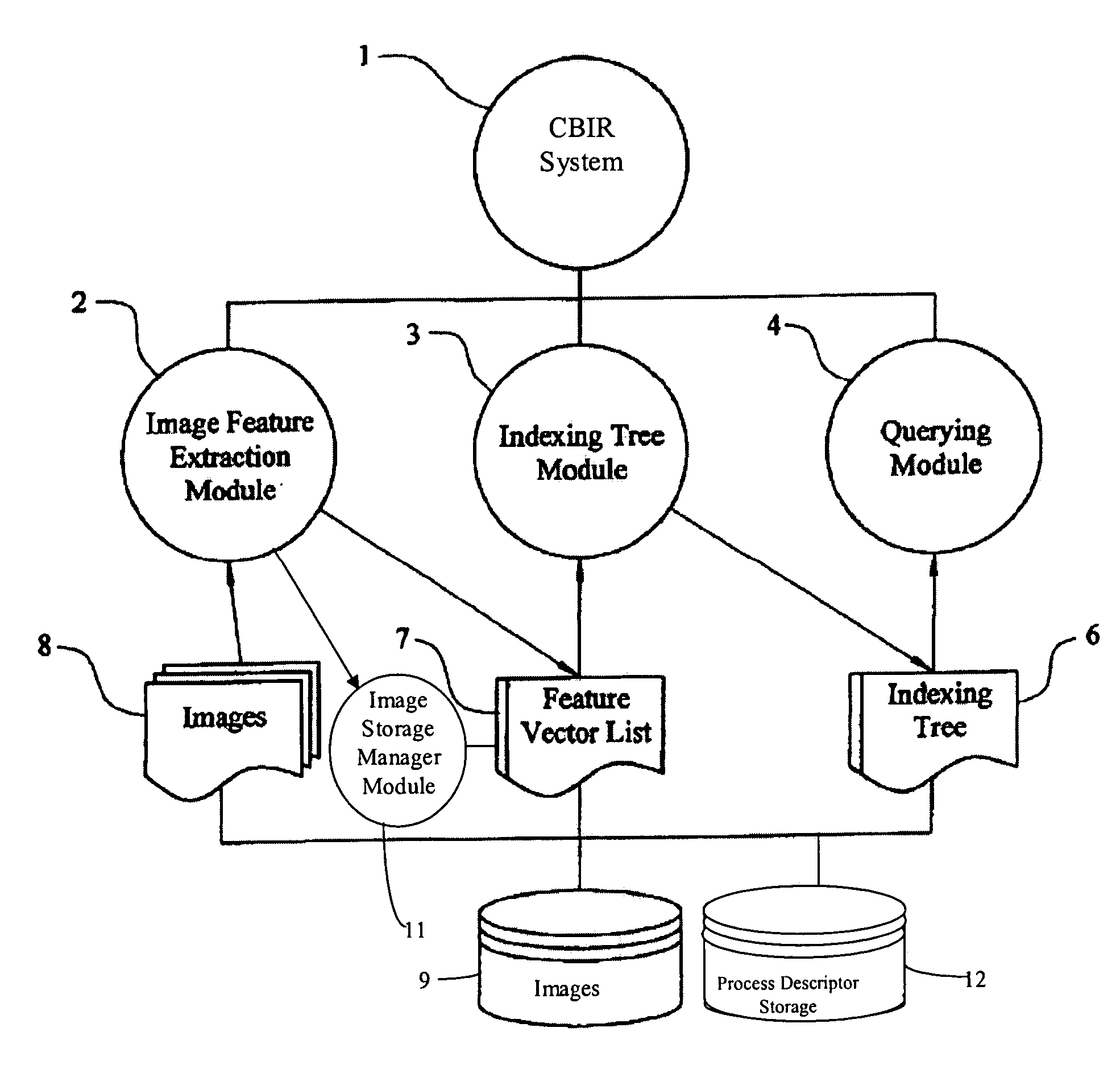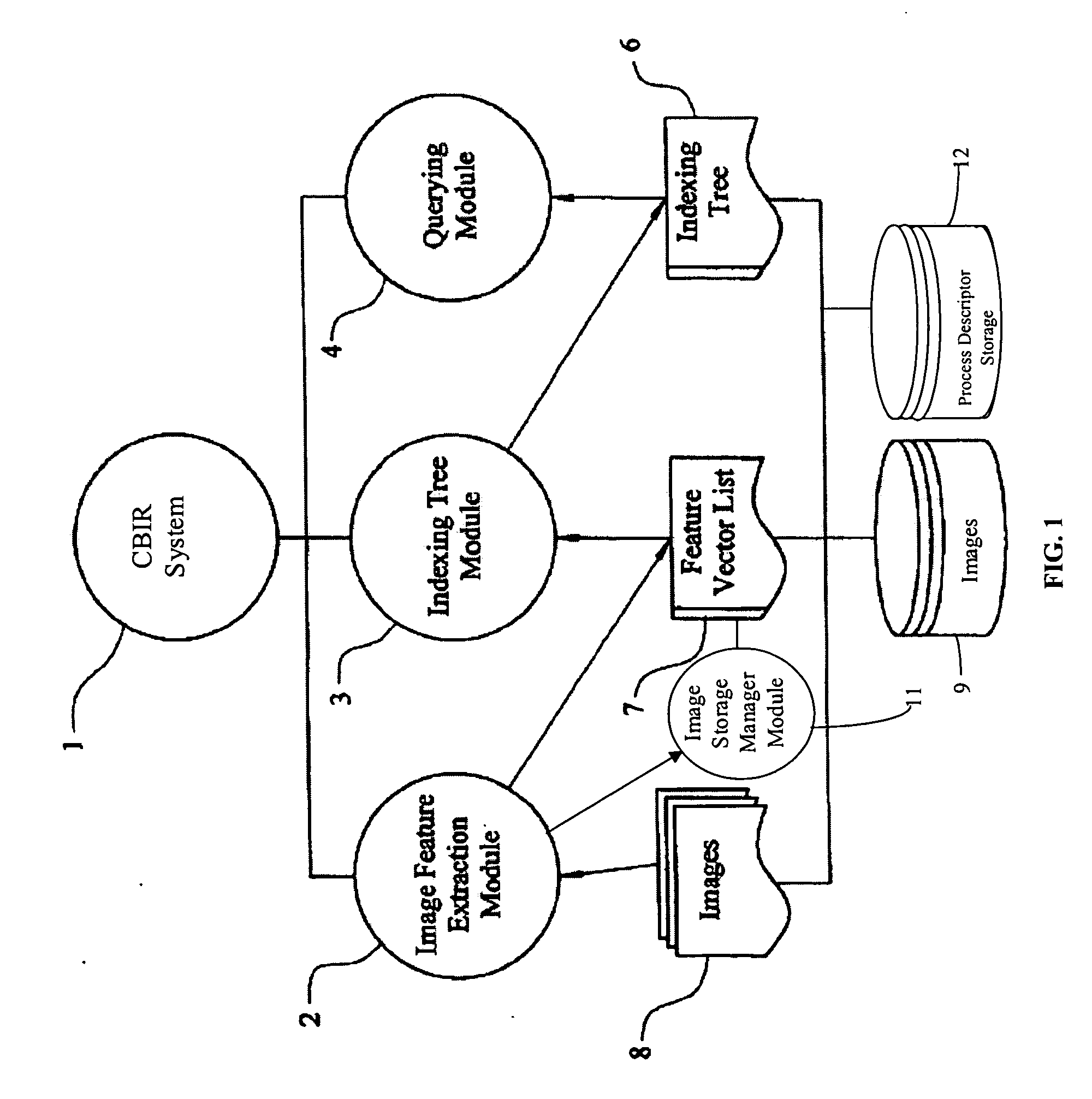Method for the reduction of image content redundancy in large image libraries
a technology of image content and redundancy reduction, applied in the field of content-based image retrieval, can solve the problems of difficult to achieve image data management in the manufacturing environment, difficult to glean historical value from these large image repositories for yield improvement, and the current standard database method associated with these data sets is difficult to use. access is typically limited today to standard database queries using non-image data
- Summary
- Abstract
- Description
- Claims
- Application Information
AI Technical Summary
Benefits of technology
Problems solved by technology
Method used
Image
Examples
examples
[0044] It should be understood that the Examples described below are provided for illustrative purposes only and do not in any way define the scope of the invention.
[0045] Testing of the invention was performed using both a simulated image data set with known statistics, and with a data set extracted from the field test data described above. Regarding the simulated data, a set of random feature vectors were generated as Gaussian clusters in feature space. The selected parameters included: (1) the number of samples (i.e., feature vectors) in the dataset; (2) the number of samples held out for k-NN testing; (3) the number of defined features per vector; (4) the number of defined classes (i.e., clusters); (5) the class parameters including the class mean and standard deviation for each feature, and; (6) the size of the initial dataset to seed for the experiment. Exemplary results obtained for a dataset similar to the CBIR field test data is shown in FIG. 3.
[0046]FIG. 3 shows three cu...
PUM
 Login to View More
Login to View More Abstract
Description
Claims
Application Information
 Login to View More
Login to View More - R&D
- Intellectual Property
- Life Sciences
- Materials
- Tech Scout
- Unparalleled Data Quality
- Higher Quality Content
- 60% Fewer Hallucinations
Browse by: Latest US Patents, China's latest patents, Technical Efficacy Thesaurus, Application Domain, Technology Topic, Popular Technical Reports.
© 2025 PatSnap. All rights reserved.Legal|Privacy policy|Modern Slavery Act Transparency Statement|Sitemap|About US| Contact US: help@patsnap.com



